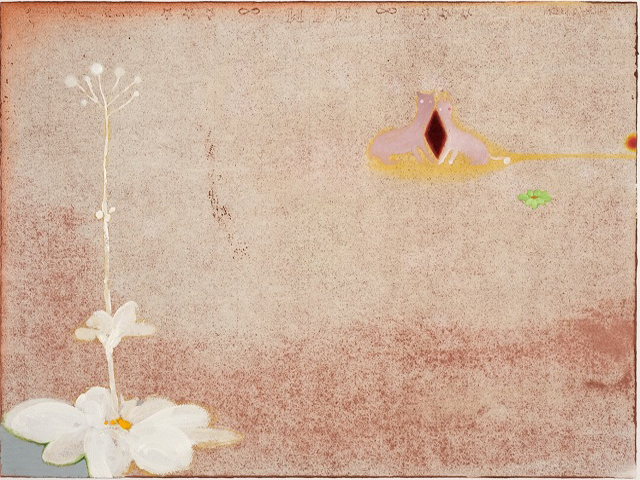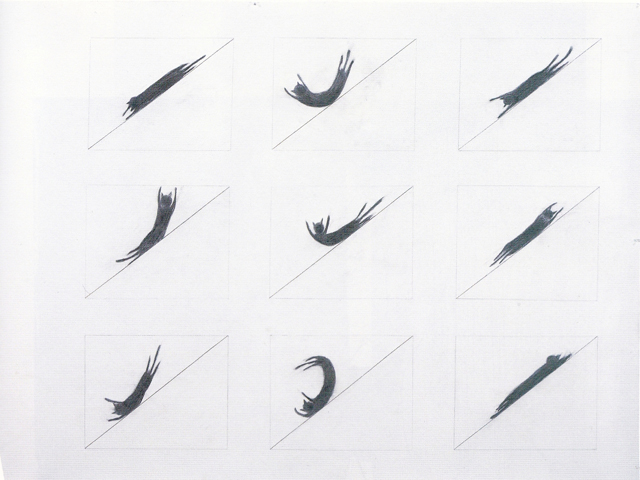Filtered By: Lifestyle
Lifestyle
Art review: Micropop blooms in Japanese traveling exhibit Winter Garden
By PATRICIA CALZO VEGA

Fiction House (Detail) by Ryoko Aoki (2009). Pen, watercolor on paper. 42 x 94 cm. All photos courtesy of the Metropolitan Museum of Manila
Curated by Midori Matsui, the exhibit features 35 works by 14 young Japanese artists, all of them active from the late 1990s to the early 2000s. Varied in make, what binds these artworks together is the presence of what Matsui terms the “micropop imagination,” a form of expression observed in the younger postwar generation. This is a generation of Japanese artists whose collective memories of divine rule and racial superiority has slowly eroded, whose faith in society was shaken by the natural and manmade catastrophes of the late 20th century: economic recession, the homogenization of lifestyles, and the disappearance of community cultures.
Now is the winter of their discontent, and micropop is their coping mechanism of choice.
Without going into Matsui’s eloquent articulation of postmodern theory, micropop is the artistic practice of generating new meanings through the playful appropriation of everyday objects; the adolescent exploration of mind and body; and the representation of order as an organic process of sedimentation and fragmentation.

Untitled by Keisuke Yamamoto (2006). Oil and Color Pencil on Paper. 50x65 cm. Courtesy of Tomio Koyama Gallery
And here one senses the hand of curatorial authority in ascribing almost opposing interpretations of artistic intent. The superflat movement views aesthetic technique as a critical response to the vapidity of consumer culture; it flattens objects to the point of voiding meaning beyond the superficial. Micropop's purpose is proactive, it sets out to find new meaningful ways of communication.
Instead of flatness, there is tactility and depth. Masaya Chiba employs wooden props to elevate his thickly textured paintings, giving them a materiality almost akin to sculpture, forcing viewers to engage in the transitional ruins he depicts. Hiroe Saeki prefers pencil work, but the intricacy of the drawings encourages viewers to eschew the bigger picture in favor of a microscopic examination of detail.

Starry Night by Hiroshi Sugito (1992) Acrylic, Pigment, Paper of Panel. 182x240 cm. Courtesy of Tomio Koyama Gallery
But this informality does not descend into anarchy; nothing could be further from the truth. Rather, micropop views disintegration (and its corollary, reconstitution) as a natural process of ordering the world.
Ryoko Aoki's "The Sun" best illustrates this principle. Comprised of disparate elements—line drawings, patterns, origami foldouts, and cloth hangings, among others—the installation asks viewers to consider piecing together meaning from these seemingly unrelated objects.
There is perhaps no correct way to go about this process, but there is no wrong way either. Meaning is not a concrete concept—it is an ongoing interrogation shaped by external forces, of one's own doing or otherwise. Taro Izumi's videos "Curos Cave" and "White Wolf" visualizes this idea, showing artworks being transformed by deliberate erasures and accidental splashes.
The exhibit title itself is open to multiple interpretations. Winter Garden, as noted in the curatorial statement, could be taken to mean a "desolate garden in winter time"; bearing in mind Japan's demographic winter, with older generations far outnumbering the youth. But Winter Garden also brings to mind the artificial environment of a hothouse, which houses a profusion of growth in a small enclosure; a microcosm of new life thriving in an unkind world.

Drawing for Cat Slide by Tam Ochiai (2007). Color Pencil, Pencil on Paper. 152 x 223.7 cm. Courtesy of Tomio Koyama Gallery
Nowhere is this more evident than in Lyota Yagi's "Vinyl," a piece performed at the exhibit launch. It consists of a record, made entirely of ice, and a vinyl player on which the record is supposed to be played. In theory, the specially crafted record is meant to play a melody as the grooves melt.
One can appreciate the care and thought that went into conceptualizing the project. But alas, we live on a tropical country, and the grooves melted before it could be played properly. The Japanese audience heard DeBussey; here in the Philippines, we heard only static. — VC, GMA News
Winter Garden runs until April 15 at the Metropolitan Museum of Manila.
Tags: wintergarden
More Videos
Most Popular



